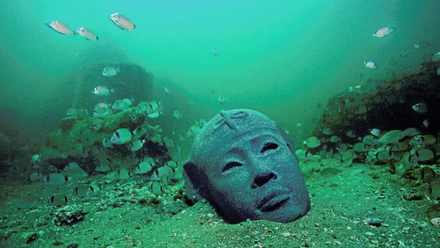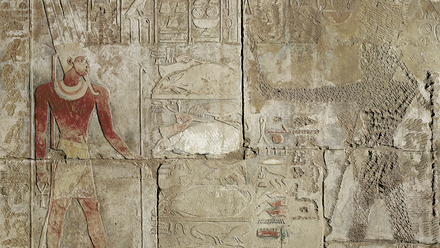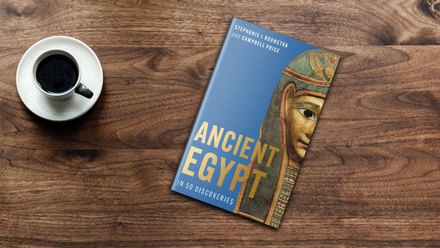P.Oxy LXXXIII 5345
In the latest volume of the Oxyrhynchus Papyri, volume LXXXIII text 5345, Professor Obbink and Dr Colomo publish a fragment from a papyrus codex (book). The two sides of the papyrus each preserve brief traces of a passage, both of which come from the gospel of Mark. After rigorous comparison with other objectively dated texts, the hand of this papyrus is now assigned to the late second to early third century AD. This is the same text that Professor Obbink showed to some visitors to Oxford in 2011/12, which some of them reported in talks and on social media as possibly dating to the late first century AD on the basis of a provisional dating when the text was catalogued many years ago. Papyrus 5345 was excavated by Grenfell and Hunt, probably in 1903 (on the basis of its inventory number), and has never been for sale, whatever claims may have been made arising from individual conversations in the past. No other unpublished fragments of New Testament texts in the EES collection have been identified as earlier than the third century AD.
The section in question and the relevant plate from the volume are available here. The article and images contained within it are copyright of the Egypt Exploration Society. Any requests to reproduce content within it should follow instructions here.
The volume, including the publication of P.Oxy LXXXIII 5345 is available to purchase here.
Statement in response to questions raised about the new fragment of Mark P.Oxy. LXXXIII 5345
Ownership: The 5345 fragment has since its excavation belonged to the EEF and its successor the EES. The collection in the Sackler Library at Oxford does include some papyri purchased by Grenfell and Hunt which belong to the University of Oxford, not the EES, and which are published separately (such as P. Nekrotaphoi); 5345 is not one of these.
Inventory number: The correct inventory number is 101/14(b); we apologise for the typographical error in P.Oxy. LXXXIII, and in our earlier posting which referred to it. Box 101 is one of a series of boxes which contain papyri which were damped out (flattened) some years after they were excavated. In this process many lost any note of their original ‘excavation’ (packing) numbers by season (on which see the note in the front matter to P.Oxy. XLII and XLIV). Some papyri do have an inventory number written on them, but many small fragments, like 5345, do not. Thus the season of excavation of this fragment is uncertain, but it may be 1903 like several nearby items in Box 101.
We note that Grenfell and Hunt sometimes used other systems of designation for papyri from Oxyrhynchus. We are working to understand these, and hope in due course to produce an account of all their systems.
Dating the papyrus and identification as Mark: EES records include a photograph and brief record card for each papyrus awaiting publication, which were prepared to assist the General Editors in selecting papyri for future volumes. The cards were created without detailed study of the texts and without access to today’s online search tools. The record card for 5345, created by Dr Coles in the early 1980s, is marked ‘I/II’, suggesting a late first- or early second-century date. He did not identify it as Mark. This is not surprising because the clearest link is a word on the abraded side which would not have been legible on a quick inspection.
The identification of the fragment as Mark was made in 2011 by a researcher working for Professor Obbink, then one of the General Editors of the Oxyrhynchus Papyri series. Professor Obbink decided he would himself prepare the text for publication. Editors are permitted, on certain conditions, to take out individual papyri from the collection for study or teaching on University premises. In spring 2016, in the light of the social media debate about possible early fragments of gospels being for sale, the EES decided to review what NT fragments had been identified in its collection but not yet published, and realised that the supposed first-century Mark was the papyrus now published as 5345. Professor Obbink was instructed to prepare it for publication as soon as practicable in order to avoid further speculation about its date and content, with Dr Daniela Colomo as co-editor; Dr Ben Henry also improved the edition at the sub-editing stage.
Non-disclosure agreement: The EES has no knowledge of, and has never seen, the NDA which Professor Daniel Wallace says someone required him to sign about the unpublished Mark fragment. Professor Obbink too says he has no knowledge of it. The EES has not received any outside request of any sort about the Mark fragment before its recent publication.
For clarity we note that the EES has never asked anyone to complete an NDA about any papyrus fragment. It has always been EES policy that Oxyrhynchus papyri should have first publication in the P.Oxy. series, and publication elsewhere, or earlier dissemination, requires specific permission. The EES publication requirements were formalised in 2017 and the form which scholars seeking to work on Oxyrhynchus papyri have to complete is available on the EES website.
Offer for sale: the EES has never sought to sell this or any other papyrus. Professor Obbink says that he did show the papyrus in his rooms (where it was temporarily for teaching purposes) to Scott Carroll, but to no-one else except some Oxford students. Scott Carroll and he discussed whether the fragment could be displayed in an exhibition at the Vatican, but without conclusion. Professor Obbink insists that he never said the papyrus was for sale, and that while he did receive some payments from the Green Collection for advice on other matters, he did not accept any payment for or towards purchase of this text.
Interpretation: It is beyond the competence of the EES to respond to queries and comments about the content, dating and significance of this fragment of Mark as published by its editors. In this statement the EES has made available all the relevant information it currently knows about the excavation, identification and preparation for publication of the text to contribute to informed debate by scholarly experts and the wider interested community.
Download a copy of this statement here.



